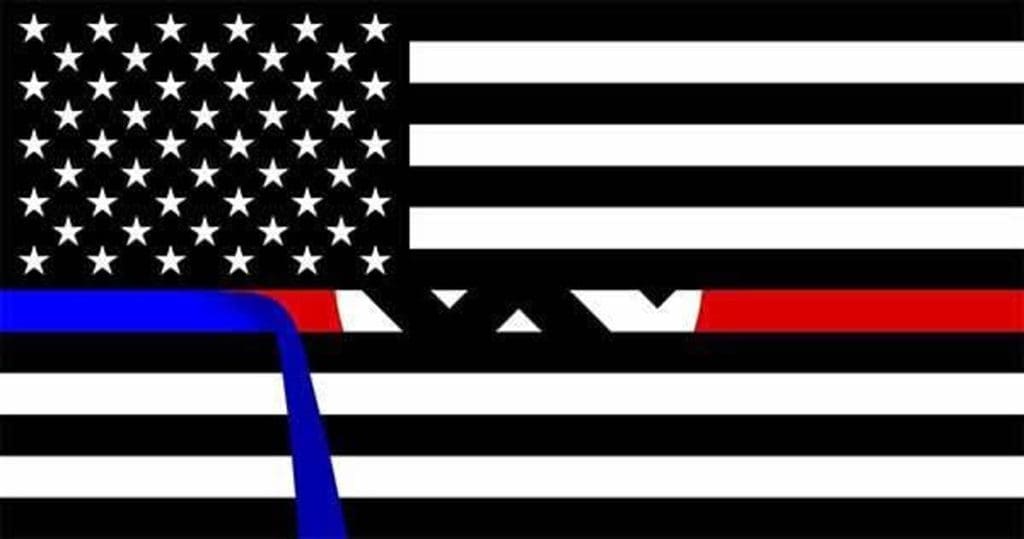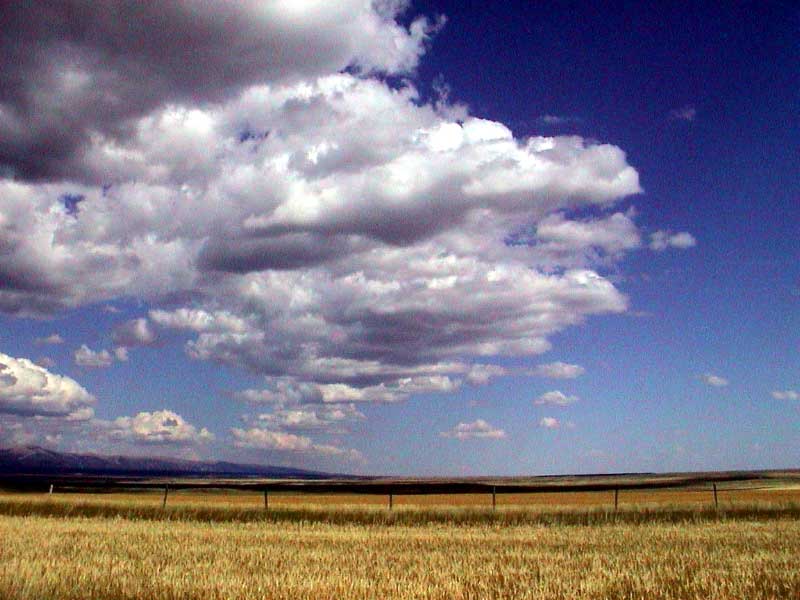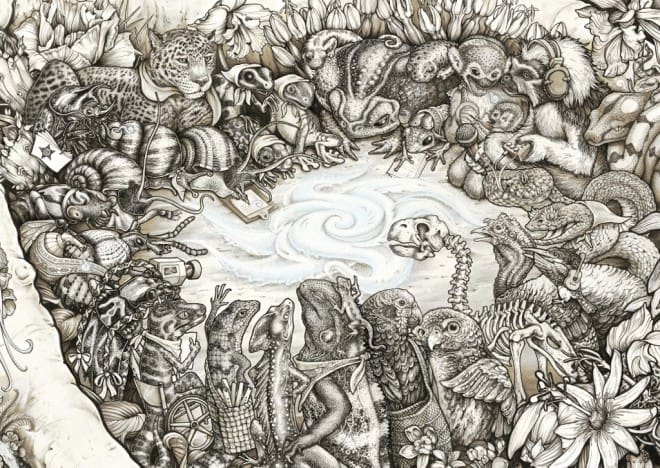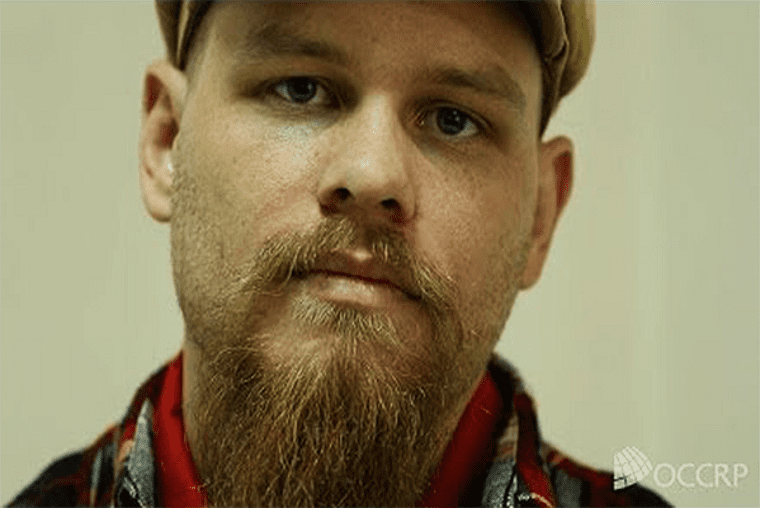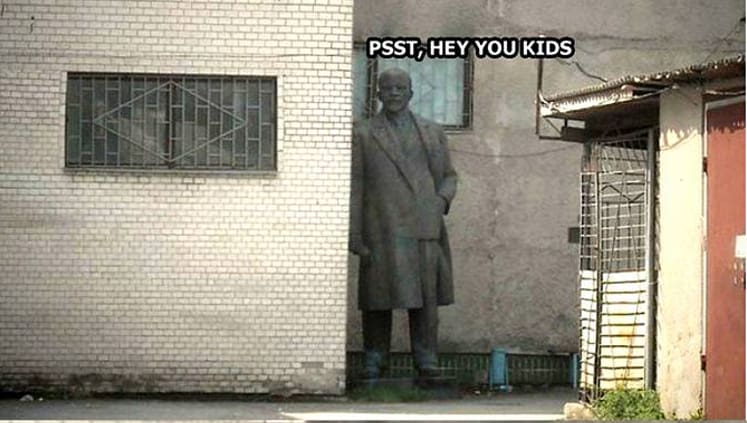Transcribed from the 3 September 2020 episode of This is Hell! Radio (Chicago) and printed with permission. Edited for space and readability. Listen to the whole interview:
Law enforcement, for hundreds of years in the United States, was explicitly white supremacist, because they were enforcing white supremacist laws.
Chuck Mertz: White supremacists and those affiliated with white supremacist organizations have joined law enforcement, provoking the racialized violence within policing that is at the heart of today’s protests. The department of justice and the FBI are fully aware of this undermining of policing by white racists who attempt to recruit other officers to their groups, but neither agency is doing a damn thing to weed out racist, neo-Nazi, and neofascist cops.
The FBI and DOJ have also been fully aware of cops in Portland, Oregon, working with armed white supremacists who have repeatedly attacked constitutionally protected rallies and protests with impunity as the cops look the other way. It should be no surprise to anyone that we are seeing the violence we are seeing in Portland, with the cops allowing at least six hundred (if not more) armed white supremacists onto the streets last week.
It has been well documented by the FBI and department of justice that white supremacists and their organizations are the greatest terror threat to the United States. In fact, they have been more deadly than all other terrorist threats combined. Yet, for whatever reason, little to nothing has been done to root out white supremacists from policing. Here to help us understand what has happened to law enforcement, fellow with the Brennan Center for Justice’s liberty and national security program, Michael German wrote the report “Hidden in Plain Sight: Racism, White Supremacy, and Far-Right Militancy in Law Enforcement” that was posted at the Brennan Center’s website.
Michael is a sixteen-year FBI veteran specializing in domestic terrorism and covert operations. He left the FBI in 2004 after reporting continuing deficiencies in FBI counterterrorism operations to congress. Michael also served as the policy counsel for national security and privacy for the ACLU’s Washington legislative office.
Welcome to This is Hell! and thank you so much for being on our show, Michael.
Michael German: Thanks for having me, I appreciate it.
CM: Is “bad apples” code for white supremacists? Is that who the “bad apples” are? Are they white supremacists?
MG: Certainly there are white supremacists in law enforcement. It’s on a spectrum: there are plenty of police officers who have joined or were already affiliated with white supremacist organizations; there are also others who are affiliated with far-right militant groups that proclaim they’re not racist, but they are involved in militant and illegal criminal activity.
Then there are police officers who engage in openly racist conduct, whether this is trading racist language on social media or in public, or otherwise acting in a manner that displays their racist ideas. There’s enough of them that the FBI warns its own agents that when they open domestic terrorism investigations of white supremacist groups or far-right militant groups, they have to be careful about who they share that information with in law enforcement, because there is sympathy for these ideas among their fellow law enforcement officers.
CM: Are white supremacists and white supremacist organizations prevalent within only the police aspect of law enforcement, or are they throughout the entire justice system?
MG: It’s interesting and complex. I appreciate that question. What I try to do in the report is explain a little bit about the history of white supremacy in the United States. I found something out as an FBI undercover agent joining white supremacist groups: their view of our history is very different from what we learn in school, and in some ways more accurate—that the European colonization of the “new world” was a white supremacist project. European whites were “god-given” the power to go and dominate other lands, often inhabited by Black and Brown people. The laws of the time were created to effect that white supremacist domination of the country. When we became the United States, slavery was enshrined in law. Among the first police in the United States were slave patrols, and other labor controls. These weren’t crime-control units, but were rather ensuring the dominance of the most powerful groups.
Law enforcement, for hundreds of years in the United States, was explicitly white supremacist, because they were enforcing white supremacist laws. This wasn’t just in the South. James Loewen has done an excellent survey of what were called “sundown towns,” towns all across the United States where Black people and other people of color were not allowed to be in town after sundown—much less live in town. These towns existed in the United States all the way through to the 1970s. Police in those towns were enforcing formal and informal rules about how people of color could travel through those towns.
This has never been an anomaly. It’s not some fringe element. It’s foundational to the creation of our nation. We have to understand that to understand how it still affects government policies. And of course those government policies are enforced by law enforcement at all levels. This happens not just in law enforcement but in every aspect of our society. If we look at corporate boards across the United States, they are disproportionately white. If we look at congress, it’s disproportionately white. If we look at the military, the officer corps is disproportionately white. Law enforcement itself is disproportionately white. Prisons are disproportionately Black and Brown.
This isn’t an accident, it’s a remnant of the structural systems that we’ve built over the decades and centuries in this country.
CM: You were saying that white supremacists embrace our white supremacist history—it seems like everybody else wants to deny it. Do you think denial of our white supremacist history leads to promoting white supremacy?
MG: Absolutely. It perpetuates it. It allows it to fester. It’s fascinating to me—as an undercover agent at the FBI I got these warnings: “Going into these groups, just keep in mind you might run across some police officers. As you’re setting up your alias background, make sure it’s tight because police officers are going to have the ability to uncover it much more easily than the average citizen.” After I left the FBI, the 2006 report “White Supremacists Infiltrating Law Enforcement” came out and reinforced what I had been told. There was another leaked report in 2015, a specific warning to domestic terrorism investigators that if you’re investigating white supremacist cases, they are often linked to law enforcement.
They are still enforcing the remnants of this white supremacist culture where part of their job is to keep what they call the “social order” intact.
Obviously the FBI knows it’s an issue, enough to warn its own agents and change its policies in how it works cases to avoid the problem. But none of those documents talk about how to protect the public from white supremacist far-right militant and racist police officers. That’s astonishing. Even though these documents have existed for decades, there is no national strategy or effort to identify these officers. So we don’t know how many. I believe it’s a small minority. But the leadership in law enforcement agencies should be rooting them out, and the federal government should be leading that effort.
CM: To you, what explains why they’re not rooting them out? What is their biggest obstacle? To you, what explains why the FBI and DOJ, fully aware of white supremacist infiltration into law enforcement, haven’t addressed it?
MG: The same reason they haven’t addressed the documented racial disparities in every aspect of policing, from stop-and-frisk to car stops to arrests, charging, sentencing, lengths of sentences, and particularly police use of force. They are still enforcing the remnants of this white supremacist culture where part of their job is to keep what they call the “social order” intact.
The FBI today can’t tell you how many people white supremacists kill each year. They don’t even bother to keep that data. Sometimes when a white supremacist kills somebody, the FBI can characterize that as domestic terrorism, because they have a “racially motivated violence” category in their domestic terrorism program (my cases were worked under the domestic terrorism program). If they do that, it’s the number one priority in the FBI today. But they could also call it a “hate crime.” That’s a civil rights violation. Civil rights violations are the number five priority. Just by labeling that crime something different, it goes down the scale and the number of resources that will be directed toward that investigation are reduced.
Worse than that: the justice department has a policy of deferring hate crime investigations to state and local law enforcement—which normally could be fine: there are a lot more state and local police officers than FBI agents out there. Except they know that five states don’t have hate crime laws, and only a minority of states actually enforce the laws they have. We know from federal reporting that only 12.6% of police departments acknowledge that hate crimes occur within their jurisdictions.
There are natural disincentives to reporting at state and local levels, so this justice department policy deferring hate crime cases to state and local prosecution is basically abandoning them. There is some really interesting data about this. The bureau of justice statistics does what’s called the National Crime Victims Survey. They go out and survey Americans about crimes that they’ve suffered. In that survey they find there are about 230,000 violent hate crimes a year. The justice department has five federal hate crime statutes—they prosecute 25 defendants each year.
So the vast majority of these crimes we don’t even document. They’re not even reported to the police, because the communities know that the police aren’t interested in these crimes. And the police don’t acknowledge most of them.
CM: So does the FBI react in a similar way when it comes to, for example, Black nationalist organizations and their members? I could imagine there would be a difficulty in criminalizing a kind of thinking, or a kind of speech, whether that is white supremacist or Black nationalist or any kind of ideology.
But you argue that this isn’t an ideology. Why do you say it’s not an ideology?
MG: As far as how the FBI treats so-called Black nationalism, it’s the opposite. When I was working these cases, we didn’t rank different groups. That was a post-9/11 phenomenon, and highly politicized in the way the justice department treated it. Starting in about 2004, the FBI was publicly stating that ecoterrorism was the number one domestic terrorism threat, even though there is not a single homicide related to activism around environmental issues. It was a very odd thing, but they would say it over and over again.
In 2017, the FBI published a document warning police departments that what they called “Black identity extremists” posed a threat to police officers. The definition of this new movement that the FBI was basically manufacturing was so convoluted it took about two paragraphs to explain, but essentially it boiled down to any person who happened to be Black who was actively protesting police violence. Obviously, in all but name, they were pointing to the Black Lives Matter movement.
Initially the FBI said the report was just playing with the language and trying to figure out how to respond to a handful of incidents of violence. But it later turned out that the FBI had initiated a nationwide investigation called the Iron Fist operation. Iron Fist was designed to identify all these Black activists who might potentially someday pose a threat to law enforcement. Even though there is a pile of bodies you could point to that were victims of white supremacist violence, the FBI’s interest in that type of criminality was much different than its interest in Black activism and environmental activism.
To the point about ideology: what I argue is not that white supremacy isn’t an ideology—it’s a very complex ideology, and these far-right militant groups have very complex ideologies. It’s that the ideology isn’t the same as the violence. I learned when I went into these groups that there were some very hardened Nazis who really believed fervently that national socialism was the proper answer to all social ills in this country, and worked very hard to promote those ideas, but when they found out who I was hanging out with—a bunch of criminals in the white supremacist movement—they would pull me aside and say: Hey, you’re a smart guy. Don’t hang out with those idiots. They’re going to get you arrested; they’re going to get you killed. The violence that they perpetrate hurts our movement more than helps it. So come with me and we’ll have you working on a newsletter that we write every week; we’ll clean you up. You don’t have any Nazi tattoos. We’ll run you for the school board. That’s how we’re going to influence the country.
And they do that. What’s been lost since 9/11 is that law enforcement doesn’t recognize that the ideology isn’t a precursor to the violence. Often it’s the opposite. Violent people are attracted to the movement because it’s a movement that promotes violence in some ways. That’s why the police reaction to the protests around the murder of George Floyd is so dangerous: by allowing far-right militants to come in and commit acts of violence and not be arrested, you’re attracting an even more violent element.
There is no barrier to entry in these groups. If you put on military-style clothing and grab a rifle and walk down to a protest, you’re representing the far-right militia movement. Slap a patch on your uniform and you’re in. There’s no qualifications. There’s no entry exam. Just by being there you’re part of the group. Somebody who’s watching this thinks, Wow, I really want to shoot somebody, here’s my chance to do it and get away with it, or do it in a way that I’ll be praised by the president of the United States and by the broader far-right community as a hero, for killing people.
The far-right groups adopting the Blue Lives Matter flag—it’s a subterfuge. It’s a way for them to gain influence. The only two police officers killed since protests started following the George Floyd murder were killed by far-right militants.
CM: Can these white supremacists be a danger to police? When you look at social media, people are always saying the police are just welcoming them in. They’re saying “You’re on our side.” They’re giving them water. They’re telling them to hide in different places while they’re sweeping the streets. So they must be on their side.
What is the danger to police? And more importantly, why don’t the police recognize the danger that white supremacists are to them?
MG: For me, that’s the most shocking part of the apparent favoritism at these protests. In the 1990s, law enforcement knew they were targets of these groups, and treated these groups as if they [the police] were targets. It was recognized. When I see police officers fraternizing with these groups at protests, or even worse, wearing the patches representative of these groups, it’s frightening to me. Because the far-right groups adopting the Blue Lives Matter flag—it’s a subterfuge. It’s a way for them to gain influence. The only two police officers killed since protests started following the George Floyd murder were killed by far-right militants. For some reason even that didn’t change the attitude. It’s shocking.
And again: the police are allowing these people to come to protests and act out violence that could be stopped. It’s fascinating that they’re using the rhetoric of “law and order,” and that these militants are “helping” them keep law and order. Most states have anti-paramilitary training laws. It’s fascinating to me, watching these incidents where far-right militants say they’re guarding this property—Great! Show me your security guard license. Every state in the union has a licensing procedure for armed security guards, because you want to make sure, number one, they’re not criminals and number two, they are trained in how to use weapons so they won’t kill people accidentally, and number three, that they have liability insurance in case they do hurt someone. There are laws already in place that could prevent a lot of this militant activity, that the police are ignoring and allowing them to break.
It’s going to end up costing more law enforcement lives. Eventually when there is some enforcement action taken against these groups, the reaction is going to be extremely violent. It’s fascinating, because the police understand that. We have a situation in Portland where this has happened over and over again for years—and the police chief says, “Well, we didn’t intervene during this violence between far-right militants and protesters, because we didn’t want to escalate the situation.” It’s sort of dumbfounding, because they escalate the situation every night against the protesters.
Why, when these people are increasing the level of violence, are the police suddenly afraid? I think it’s because they recognize they can’t indiscriminately tear gas and shoot at these people with less-lethal rounds, because they’ll shoot back. They’re empowering a group that is far more dangerous than the one the group is attacking.
CM: You were saying that two cops have been killed, both killed by white supremacists. You also mention what’s been going on in Portland for a very long time—dating back to at least 2014-2015 these far-right groups have been coming in from outside Portland to confront protesters.
This is all very well-known if you follow local media outlets in Portland like Willamette Week and other places like that. However, you don’t see these stories on the national news. How predictable was what is happening right now in Portland, Oregon? Did you see this coming, eventually?
MG: Absolutely. Last weekend, when one of the far-right militants was shot and killed, there was a press conference, and the way the mayor and the police chief talked about it was as if the last four years hadn’t happened. But this is exactly what people have been warning you about in your lax response to far-right violence from the very beginning. There was an independent police review done that exposed it, and asked why the police treated far-right groups so differently than anti-racism groups. A leader in the police department was quoted as saying, “Well, we cooperate more with the far-right groups because they have more mainstream ideas.”
Right? Just jaw-dropping. And yet, nothing was changed. When the next round of protests happened and police behavior hadn’t changed, and the protests remained problematic, they hired an independent entity to come in and do an investigation. Here we have, again, a violent police response to anti-racism protests, and the protests become more violent, which is entirely predictable—this isn’t the first time we’ve had civil unrest in this country based on racist and violent policing. This is what happened all through the 1960s, as you were saying, when people like Fred Hampton were out there engaging in this kind of activism. Those events were studied, and what they found was that it was the police reaction that often made the protests more violent.
We abandoned that escalating violence tactic that the police had used, and that worked for about twenty years. But in the late nineties, the police turned their back on that and regenerated this escalating violence methodology. And it’s resulted in the same violent protests. They don’t seem to recognize that there’s a bunch of literature they could use. They keep doubling down on this tactic that has proved completely ineffective. I don’t understand it, because I don’t think you can become a police chief or a mayor without being a smart person. But the literature is there, the scholarly studies are there. All you have to do is read them, and adopt other methodologies, and things would be much better.
CM: Is the police allowing armed far-right extremists to confront those protesting against police violence—is that nothing new? Is this not about the Trump era? Is this more about the politicization of the FBI dating back to 9/11?
Is it a mistake to focus on this as just an issue of the Trump era? Should we look at it in the larger context, that no matter who is president, we might be having this same violence?
It’s not as if police departments and police leadership don’t know about this. They’re participating in it, in many cases. They’re not doing anything to curb it.
MG: Great question. Trump is the symptom, not the sickness. If we look at the way the Obama administration responded to the Ferguson Black Lives Matter protests after the killing of Mike Brown; if we look at the way the police reacted, with the FBI involved, to the Standing Rock protests, the Water Protectors—again, environmental protesters were being treated as a major terrorism threat. Those activists are still being hounded by the FBI, still finding themselves on security lists at the airport so they get stopped and questioned every time they fly. This isn’t something that just came about during the Trump administration. Correcting it will require some wholesale reforms.
I wrote a book about how to reform the FBI, called Disrupt, Discredit, and Divide. I took that language out of the COINTELPRO programs of the 1960s and 1970s, because that tactical messaging was re-adopted after 9/11 in the FBI. They again have a disruption strategy, just as they did in COINTELPRO, and getting to the bottom of that will be a major effort that needs to happen for us to return law enforcement to being a public service rather than a threat to the public. They should be serving the needs of the public, not suppressing them.
CM: Let’s discuss unconscious bias for a second. There’s all this bias training, there are all these department of justice decrees. We’ve had one of these decrees here in Chicago. But as you were mentioning earlier, while there may not be any more “sundown towns,” police continue in a way that reinforces the kinds of actions that were imposed during that era. We’ve talked to South African activists who say that post-Apartheid police are just as white supremacist as Apartheid police were, even thought they are now mostly Black people instead of being white people; the institutionalization of practices within the police department cannot be overcome with just a few reforms.
What explains to you why these reforms are ineffective? Why don’t they lead to a more democratic police force?
MG: When I was doing the research and looking at unconscious bias training programs, I quoted three separate trainers who spoke about how they consciously avoid any suggestion that there is explicit bias, that there is actual racism, when they do their training. I think that is a fatal flaw. There is unconscious bias, but there is also the structural bias we’ve talked about already, the structural bias that affects the whole of society and the whole of the police department, and also creates implicit bias within individuals.
It is important to train law enforcement agencies about how unconscious biases affect their conduct and policy, but to do that without acknowledging the overt racism in law enforcement as well creates a hole that swallows up the effectiveness of the programming. Until you’re willing to say this is a real problem and we have to address it, it’s not going to change. The purpose of my writing wasn’t to “let law enforcement know” that there’s a problem—these FBI reports demonstrate that law enforcement knows it’s an issue. It needs to be brought into the light so that we can actually acknowledge it and develop national strategies to address it.
CM: As you point out, white supremacists and people affiliated with white supremacist organizations within law enforcement are still a fraction of policing around the United States. They’re just a few “bad apples.” But how much influence can those white supremacists have within the police department? Do they go into the police department and try to recruit others into white supremacy?
MG: They do. There are people who come into the police department who already hold these views, and there are people who are influenced. There are tons of studies about policing culture, and about how young police officers are brought into the policing culture. Certainly when openly racist police officers are allowed to remain in these departments they can have a continuing influence.
Some of the best insights we have come from research done by the Plain View project and the investigative journalists at Reveal who uncovered racist social media platforms that police were participating in. One involved the US border patrol—this is not just a state and local law enforcement problem, it’s a problem in federal law enforcement as well. Dozens if not hundreds of border patrol agents were trading racist jokes and saying things about the people that they interact with—and leaders of the border patrol were on this platform. It’s not as if police departments and police leadership don’t know about this. They’re participating in it, in many cases. They’re not doing anything to curb it. That’s the problem.
There are some prosecutors now who are taking a stand. A prosecutor in the county that covers St. Louis, as soon as those reports came out, put all those officers on what’s called a “no-call list,” recognizing that prosecutors have an obligation to provide defense attorneys and defendants any exculpating information they have. If they have information that would suggest the defendant is innocent, they can’t hide that. They have to provide that to the defense. That includes information that would challenge the veracity of the witnesses they put on the stand. If the prosecutor’s office knows that a police officer has expressed racist views and engaged in racist activities, that’s information that should be passed on to the defense, so the defense can use that evidence to challenge whether that police officer’s testimony is valid.
For the police department, that would make it so this police officer is no longer very effective as an investigator or out on the street, because they can’t testify. And there are plenty of police jobs that they can do. They can work in the evidence room, they can work in the personnel office, they can do a lot of different jobs. But the public needs to be protected from them. Mitigation strategies have to be put in place.
CM: You point out that there has been a loss in public trust in justice. What happens to a nation when that public trust is lost? Is that an existential threat to the United States?
MG: I’m afraid it is. I try not to make predictions, but I’m very concerned about where we are and how we get back to a sane and safe society. There’s such political division in this country—and especially having spent time with Nazis and understanding how that regime came to power, there are too many echoes that are quite troubling. I hope that saner minds will come into play here and we’ll realize that we need to be a nation where we care for one another. But we’re in a dangerous place.
I have a lot of confidence in the American public. I don’t have a lot of confidence in anybody else. The public has to make sure that we are focused and we demand responsible government, and that’s why I give so much credit to the younger generation who is out in the streets every night fighting for their rights. We need to support them.
CM: Thank you so much for being on our show this week.
MG: Absolutely.

